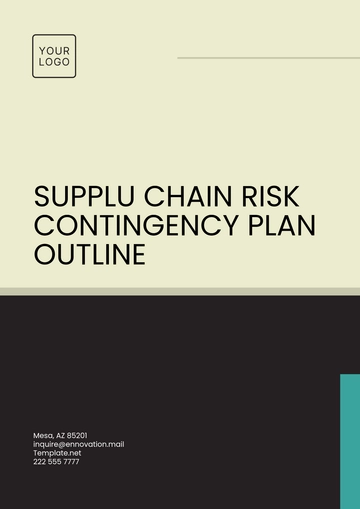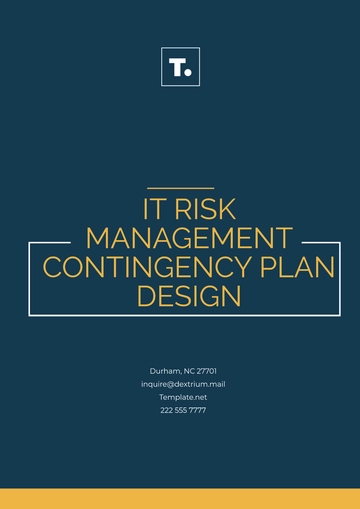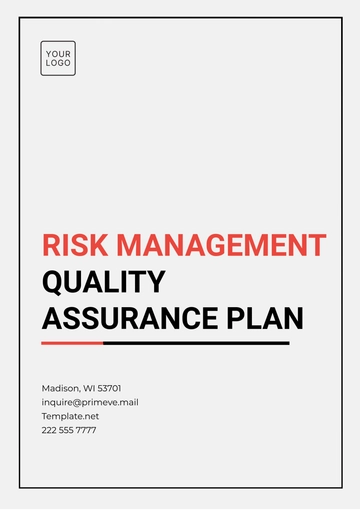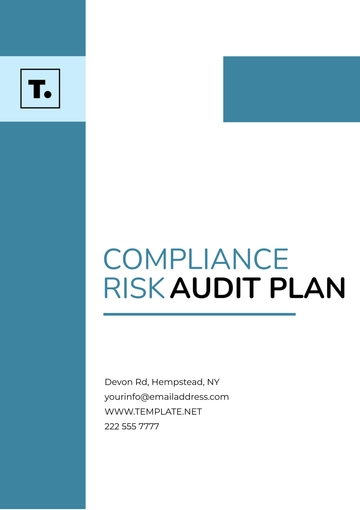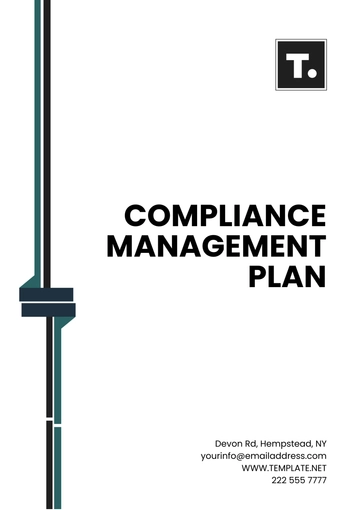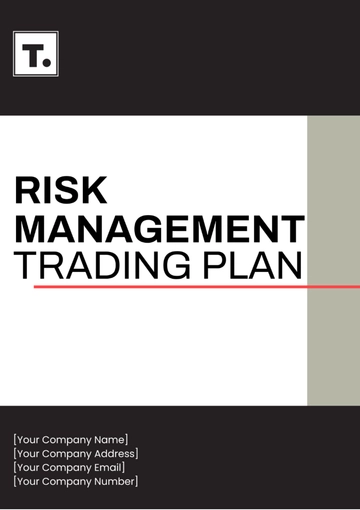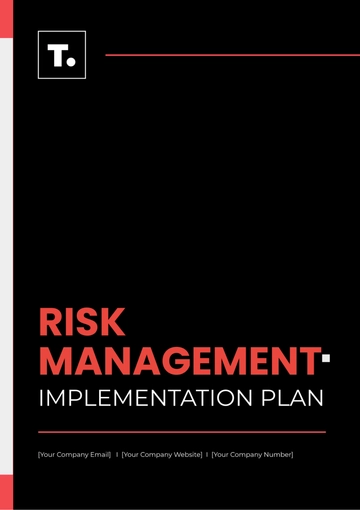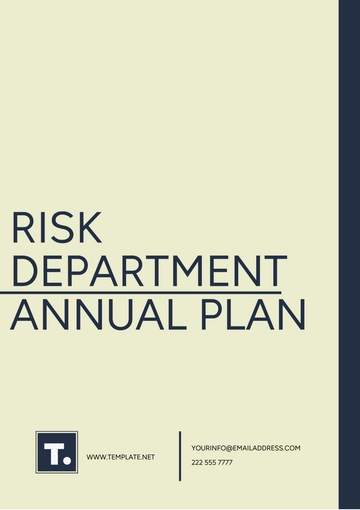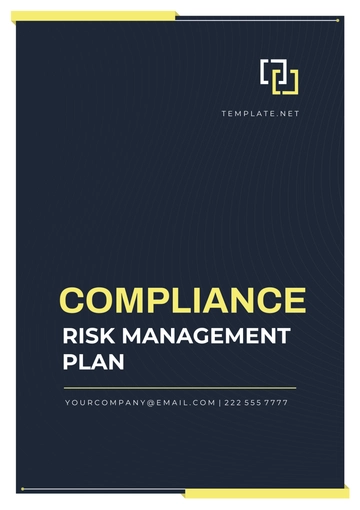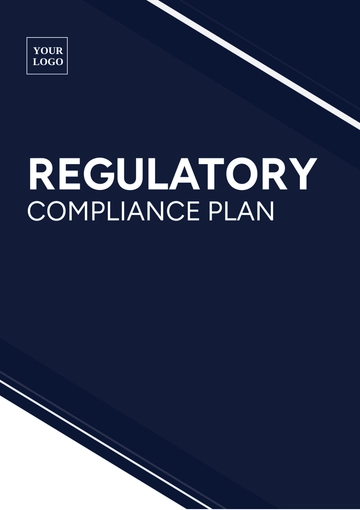Free IT Risk Management Contingency Plan Design
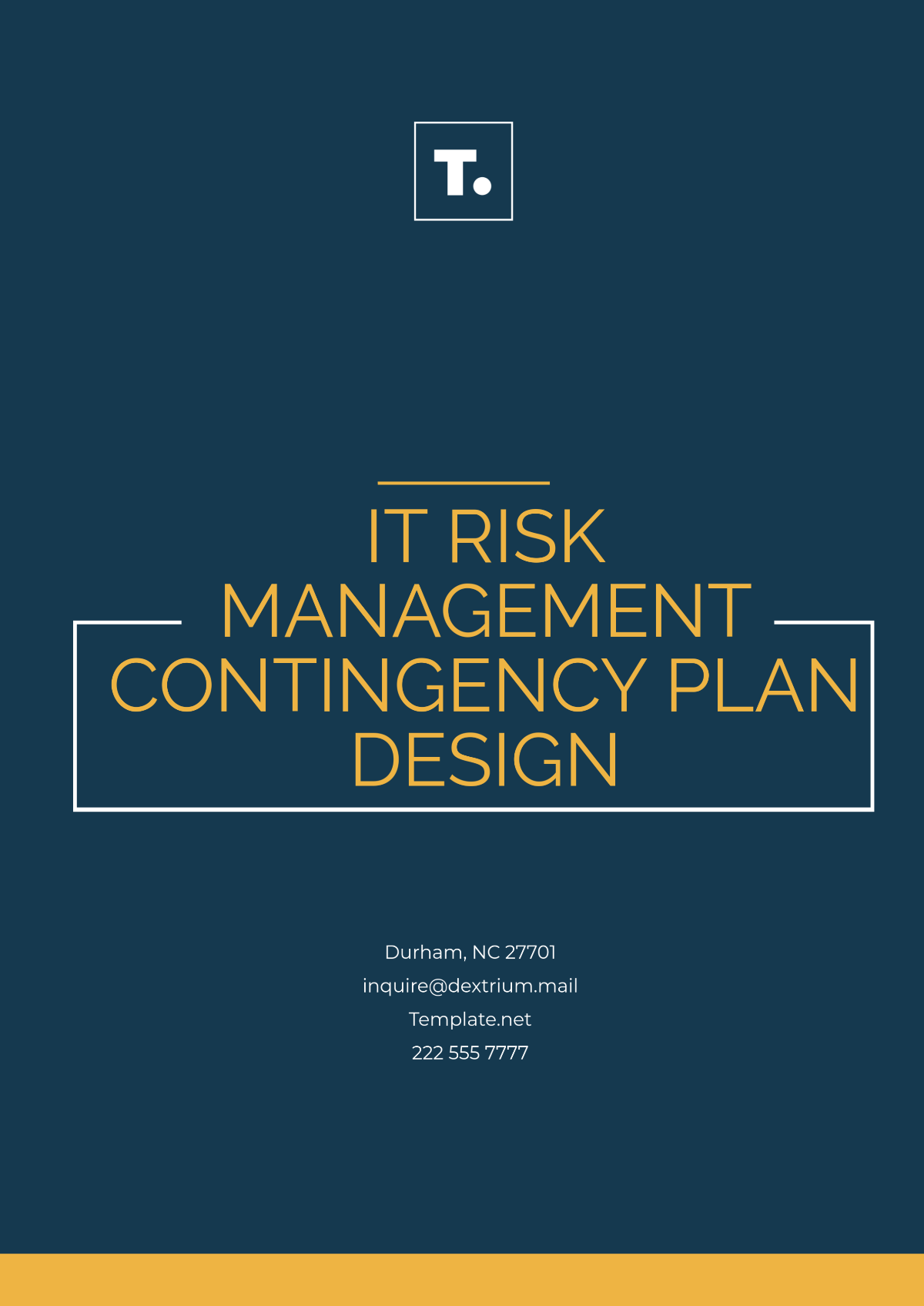
Prepared By: [Your Name]
Date: June 18, 2060
I. Risk Identification
Effective risk identification is the foundation of any comprehensive IT risk management plan. The following are key IT risks that can severely disrupt business operations, compromise data integrity, or damage the company’s reputation:
Cyber-attacks – These include hacking attempts, ransomware, and Distributed Denial of Service (DDoS) attacks that may lead to data breaches or system downtimes.
Data breaches – Unauthorized access to sensitive data, which can result in severe legal and financial consequences.
Hardware failures – Unexpected malfunctions in critical hardware, such as servers, storage devices, or networking equipment, that can interrupt operations.
Software vulnerabilities – Bugs or weaknesses in software code that attackers can exploit to compromise systems or gain unauthorized access.
Network disruptions – Interruptions in network connectivity, potentially affecting remote work, cloud applications, or communications.
Insider threats – Employees or contractors who intentionally or unintentionally cause harm by accessing or misusing sensitive information.
These risks can have varying degrees of impact on operational continuity, financial performance, customer trust, and compliance requirements.
II. Risk Assessment
A thorough risk assessment evaluates the likelihood of each identified risk occurring, as well as its potential impact on the organization. This helps prioritize which risks to address first. Risks are categorized into three levels for both likelihood and impact: Low, Medium, and High.
Risk | Likelihood | Impact |
|---|---|---|
Cyber-attacks | High | High |
Data breaches | Medium | High |
Hardware failures | Medium | Medium |
Software vulnerabilities | Medium | High |
Network disruptions | Medium | Medium |
Insider threats | Low | High |
Key Considerations:
Cyber-attacks are high-likelihood and high-impact risks due to the increasing sophistication of threat actors.
Data breaches are categorized as medium likelihood but high impact due to regulatory implications (e.g., GDPR) and the potential for significant financial loss.
Hardware failures present a medium likelihood, but their impact may vary depending on system redundancy and backup measures.
III. Mitigation Strategies
Mitigation strategies aim to reduce either the likelihood of risks occurring or their potential impact on the organization. The following actions are critical for mitigating the most common IT risks:
A. Cyber-attacks:
Proactive defenses: firewalls, intrusion detection/prevention, endpoint protection.
Security audits and penetration testing to identify vulnerabilities.
Employee training on cybersecurity awareness and phishing prevention to reduce human error.
B. Data breaches:
Encryption of sensitive data both at rest and in transit.
Access control protocols to restrict critical information to authorized personnel.
Multi-factor authentication (MFA) adds an extra layer of protection to systems and data.
C. Hardware failures:
Redundancy planning to ensure critical systems have failover mechanisms in place.
Regular hardware maintenance and monitoring to replace aging components.
Disaster recovery (DR) planning to ensure minimal disruption during hardware failure events.
IV. Response Plan
The Response Plan details the immediate actions to take when a risk manifests. This plan ensures a swift, coordinated response to contain the damage and minimize downtime. Key components of the response plan include:
Incident Containment:
Isolate affected systems or networks to prevent further compromise.
Engage security teams to remove malicious activity (e.g., malware) from systems.
Communication Protocols:
Notify relevant internal teams and stakeholders, including management, IT support, and legal.
Communicate clearly with affected customers or partners if necessary to maintain transparency.
Follow Predefined Protocols:
Activate incident-specific protocols that have been defined and tested in advance (e.g., DDoS mitigation procedures, and data breach notification).
Document the incident in real time for later analysis and reporting.
V. Recovery Procedures
Post-incident recovery is essential to return to normal business operations as quickly as possible. The focus is on restoring data and IT systems, maintaining operational continuity, and ensuring data integrity. Key recovery components include:
Regular Backup Management:
Ensure that backups are created and stored securely, and are regularly updated.
Store backups offsite or in the cloud to ensure they are protected from physical damage or cyber threats.
Documented Recovery Process:
Define a step-by-step process for restoring affected systems and data, and test these processes regularly.
Implement business continuity plans (BCPs) to minimize disruptions during the recovery phase.
System Restoration & Testing:
After restoration, verify the integrity of data and systems to ensure everything is functioning correctly before going live.
Test systems periodically to ensure they are protected against known vulnerabilities.
VI. Communication Plan
A robust communication plan ensures that all relevant stakeholders are consistently informed during a crisis. This reduces uncertainty, helps manage the flow of information, and ensures a coordinated response. Key elements include:
Clear Notification Hierarchy: Designate key personnel (e.g., Incident Manager, IT Security Team, PR, Legal) who will be responsible for managing communication during incidents.
Regular Stakeholder Updates:
Send timely updates to internal stakeholders, customers, and regulatory bodies as required.
Use predefined channels (e.g., internal chat systems, email, public website) to disseminate information.
Post-Incident Reporting:
Provide a final incident report detailing the nature of the event, the impact, recovery steps, and lessons learned.
Hold a post-incident review meeting with all relevant parties to assess the effectiveness of the response.
VII. Roles and Responsibilities
Clearly defined roles and responsibilities ensure an efficient and effective response to IT incidents. Each team member has specific tasks to carry out, and collaboration is key to managing incidents successfully:
Incident Manager: Coordinates all response efforts and ensures tasks are executed as planned.
IT Security Team: Takes charge of identifying and addressing system vulnerabilities, deploying countermeasures, and working to restore services.
Management Team: Makes high-level decisions, communicates with external stakeholders (e.g., regulators, media), and ensures compliance with legal and regulatory obligations.
PR Team: Manages public communications and ensures the company’s reputation is protected during and after an incident.
VIII. Testing and Drills
To ensure the response plan's effectiveness, testing and drills should be conducted regularly. Simulated incidents provide the opportunity to evaluate the team's readiness and identify areas for improvement.
Biannual Simulations: Conduct simulated incidents to test the effectiveness of the incident response plan, coordination between teams, and overall preparedness.
Scenario-Based Drills: Design drills to reflect real-world scenarios such as cyber-attacks, data breaches, and hardware failures.
Post-Drill Evaluations: After each drill, conduct a debriefing session to discuss successes, challenges, and opportunities for refinement.
IX. Review and Updates
The risk management plan should be a living document, updated regularly to reflect changes in the IT landscape, business priorities, and lessons learned from previous incidents.
Annual Review: Conduct an in-depth review of the risk management plan once a year, ensuring it addresses any new risks or changes in technology.
Continuous Improvement: Incorporate feedback from incident reviews and post-drill evaluations to improve the effectiveness of the risk mitigation and recovery procedures.
Future-Proofing for 2060 and Beyond: Stay informed about emerging threats and technologies (e.g., AI-driven cyber-attacks, quantum computing) to ensure the plan remains relevant as the business and technological environments evolve.
- 100% Customizable, free editor
- Access 1 Million+ Templates, photo’s & graphics
- Download or share as a template
- Click and replace photos, graphics, text, backgrounds
- Resize, crop, AI write & more
- Access advanced editor
Guard your IT infrastructure with the IT Risk Management Contingency Plan Design Template from Template.net. This editable and customizable template helps you plan for IT-related risks, including system failures, data breaches, and cyber-attacks. Editable in our Ai Editor Tool, it allows you to personalize your IT risk management strategies quickly. Protect your systems and data—download this essential template today!
You may also like
- Finance Plan
- Construction Plan
- Sales Plan
- Development Plan
- Career Plan
- Budget Plan
- HR Plan
- Education Plan
- Transition Plan
- Work Plan
- Training Plan
- Communication Plan
- Operation Plan
- Health And Safety Plan
- Strategy Plan
- Professional Development Plan
- Advertising Plan
- Risk Management Plan
- Restaurant Plan
- School Plan
- Nursing Home Patient Care Plan
- Nursing Care Plan
- Plan Event
- Startup Plan
- Social Media Plan
- Staffing Plan
- Annual Plan
- Content Plan
- Payment Plan
- Implementation Plan
- Hotel Plan
- Workout Plan
- Accounting Plan
- Campaign Plan
- Essay Plan
- 30 60 90 Day Plan
- Research Plan
- Recruitment Plan
- 90 Day Plan
- Quarterly Plan
- Emergency Plan
- 5 Year Plan
- Gym Plan
- Personal Plan
- IT and Software Plan
- Treatment Plan
- Real Estate Plan
- Law Firm Plan
- Healthcare Plan
- Improvement Plan
- Media Plan
- 5 Year Business Plan
- Learning Plan
- Marketing Campaign Plan
- Travel Agency Plan
- Cleaning Services Plan
- Interior Design Plan
- Performance Plan
- PR Plan
- Birth Plan
- Life Plan
- SEO Plan
- Disaster Recovery Plan
- Continuity Plan
- Launch Plan
- Legal Plan
- Behavior Plan
- Performance Improvement Plan
- Salon Plan
- Security Plan
- Security Management Plan
- Employee Development Plan
- Quality Plan
- Service Improvement Plan
- Growth Plan
- Incident Response Plan
- Basketball Plan
- Emergency Action Plan
- Product Launch Plan
- Spa Plan
- Employee Training Plan
- Data Analysis Plan
- Employee Action Plan
- Territory Plan
- Audit Plan
- Classroom Plan
- Activity Plan
- Parenting Plan
- Care Plan
- Project Execution Plan
- Exercise Plan
- Internship Plan
- Software Development Plan
- Continuous Improvement Plan
- Leave Plan
- 90 Day Sales Plan
- Advertising Agency Plan
- Employee Transition Plan
- Smart Action Plan
- Workplace Safety Plan
- Behavior Change Plan
- Contingency Plan
- Continuity of Operations Plan
- Health Plan
- Quality Control Plan
- Self Plan
- Sports Development Plan
- Change Management Plan
- Ecommerce Plan
- Personal Financial Plan
- Process Improvement Plan
- 30-60-90 Day Sales Plan
- Crisis Management Plan
- Engagement Plan
- Execution Plan
- Pandemic Plan
- Quality Assurance Plan
- Service Continuity Plan
- Agile Project Plan
- Fundraising Plan
- Job Transition Plan
- Asset Maintenance Plan
- Maintenance Plan
- Software Test Plan
- Staff Training and Development Plan
- 3 Year Plan
- Brand Activation Plan
- Release Plan
- Resource Plan
- Risk Mitigation Plan
- Teacher Plan
- 30 60 90 Day Plan for New Manager
- Food Safety Plan
- Food Truck Plan
- Hiring Plan
- Quality Management Plan
- Wellness Plan
- Behavior Intervention Plan
- Bonus Plan
- Investment Plan
- Maternity Leave Plan
- Pandemic Response Plan
- Succession Planning
- Coaching Plan
- Configuration Management Plan
- Remote Work Plan
- Self Care Plan
- Teaching Plan
- 100-Day Plan
- HACCP Plan
- Student Plan
- Sustainability Plan
- 30 60 90 Day Plan for Interview
- Access Plan
- Site Specific Safety Plan






